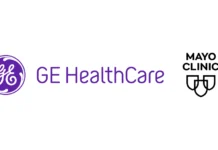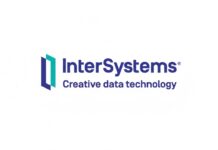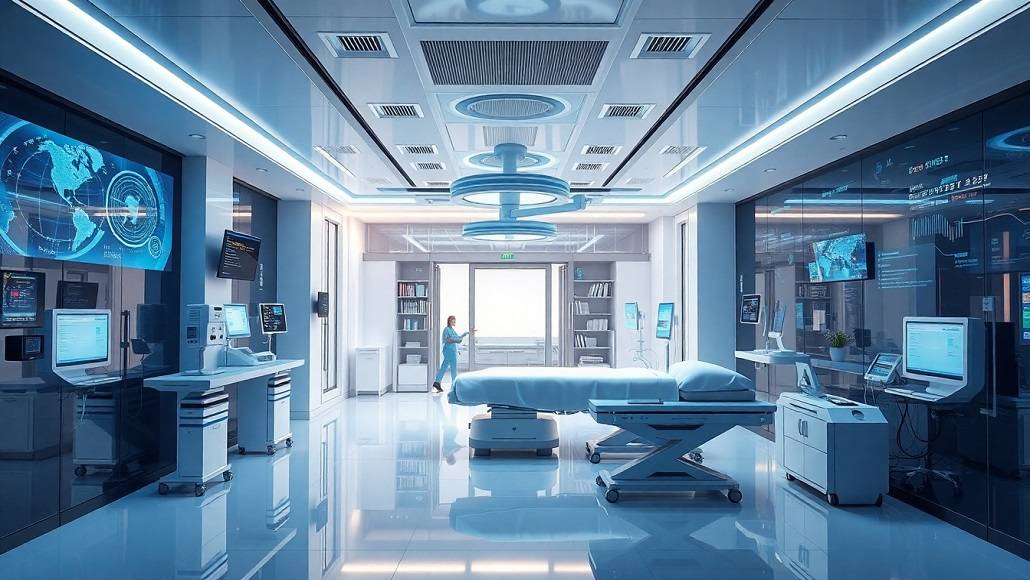The healthcare sector is witnessing a seismic shift, with artificial intelligence (AI) acting as the bedrock of innovation. Healthcare institutions and hospitals are increasingly looking to AI to streamline operational efficiency, enhance patient outcomes, and curtail expenditure. Hospital management through AI is no longer a vision for the future; it is fast becoming the new benchmark for global healthcare operations. From predictive analysis to individualized patient care, AI is crafting a new future of hospital management, one that is more efficient, data-driven, and patient-centric.
As hospitals battle to keep pace with the increasing needs of contemporary medicine and technology, five trends in hospital management through AI is emerging. These trends are clearing the way for intelligent hospitals, establishing standards of operational excellence and innovation.
AI-Driven Predictive Analytics for Operational Efficiency
One of the most revolutionary uses of AI in hospital administration is predictive analytics, which is an instrument that enables hospitals to take informed, data-driven decisions. Conventional hospital administration tends to be a problem-reaction approach, but AI turns this into a concept of anticipating issues before they arise.
For example, predictive analytics can predict patient admission rates based on past experience and outside events like seasonal illnesses or outbreaks in the local area. This enables hospitals to better manage resources like staff, beds, and medical equipment. McKinsey & Company research states that predictive analytics fueled by AI has the potential to lower operational costs by as much as 25%, while greatly improving resource utilization.Furthermore, predictive models are being used to foresee equipment breakdowns, where essential medical equipment will continue to function without risking downtime. Hospitals that incorporate predictive analytics in their management systems not only optimize operational effectiveness but also enhance patient safety through minimizing cases of resource deficiency or equipment failure.
Revolutionizing Patient Care Through Personalized Medicine
Another revolutionary trend is the use of AI in personalized medicine, which is revolutionizing hospital management by making treatment plans specific to patients. AI systems can suggest customized treatment protocols that are optimal in terms of efficacy and low in side effects by studying a patient’s genetic profile, past history, and lifestyle parameters.
Take oncology as a case point, where AI-based systems are transforming cancer treatment. AI platforms can scan genomomic data to find out which treatments will be most successful for a given form of tumor, greatly improving treatment success rates. Hospitals that take up this technology are redefining standards for precision medicine, providing care that is not just life-saving but also deeply patient-centered.
The application of AI in personalized medicine also pervades chronic disease management. For diabetes or hypertension, for example, AI systems produce custom health advice and track patient records in real time. This amount of personalization reaffirms the key position of AI in rearranging hospital management according to individual patient needs rather than standard solutions.
Enhancing Administrative Efficiency Through AI-Powered Automation
Administrative inefficiencies have a long history of frustrating hospital management, taking resources away from patient care. AI-driven automation is tackling these inefficiencies by automating mundane administrative processes. From appointment scheduling to billing and coding, AI systems are making complex workflows simple and free from human error.
For instance, natural language processing (NLP) software is being utilized to automatically transcribe physician’s notes and refresh electronic health records (EHRs) to lighten the administrative load on healthcare practitioners. Accenture estimates in a report that AI-fueled automation can save the U.S. healthcare sector around $150 billion each year by 2026.
Furthermore, chatbots and virtual assistants are being used to manage patient queries, giving hospital staff time to concentrate on more pressing duties. These AI solutions not only enhance operational productivity but also the patient experience by enabling timely and accurate delivery of response to queries.
The use of AI in diagnostics highlights how it is revolutionising hospital administration by enabling previously unheard-of levels of precision and effectiveness in medical assessments.
AI-Powered Diagnostics and Imaging
Advanced workforce management is the last trend influencing hospital administration with AI. This is a crucial area where AI is having a discernible impact. Hospitals run smoothly even during times of high demand because to effective labour management.
AI-based diagnostic software is most potent in medical imaging. As an example, AI algorithms such as those engineered by Google Health can identify breast cancer in mammography images with accuracy matched by, if not surpassing, that of skilled radiologists. AI is also being utilized to analyze CT scans, MRIs, and X-rays, detecting abnormalities in minutes, not hours or days.
Hospitals that incorporate AI-based diagnostics within their management can cut diagnostic errors significantly, speed up treatment decisions, and improve patient outcomes. In addition, the technologies lighten the load on medical professionals, enabling them to concentrate on more intricate and complex cases.
The implementation of AI in diagnostics highlights its revolutionary role in hospital management, leading to unparalleled accuracy and efficiency in medical assessments.
Advanced Workforce Management Through AI
The last hospital management through AI is smart workforce management, a performance area where AI makes its impact measurable. Effective workforce management assures smooth performance of hospitals even during peak demand seasons.
Workforce management systems that are powered by artificial intelligence study past data, patient admissions, and employee availability to create optimized work schedules. Staffing needs for peak periods or emergencies can be forecasted by these systems, so that hospitals never experience understaffing or overstaffing.
For example, during the pandemic of COVID-19, AI algorithms were used to distribute healthcare personnel among departments following real-time data to ensure that critical areas such as ICUs and emergency rooms received proper staffing. This not only enhanced patient care but also minimized burnout among healthcare workers.
In addition, AI is being more used for employee training and upscaling. AI-powered virtual reality (VR) simulations give healthcare professionals realistic simulation training, which empowers them with the competencies required to manage challenging medical situations.
Hospitals can guarantee ideal staffing levels, cut down on operational inefficiencies, and raise employee happiness by utilising AI for workforce management. These benefits all help to improve patient care.
Conclusion
Perhaps the most obvious example of AI’s revolutionary involvement in healthcare is how it has affected hospital administration. Hospital operations are being drastically changed by these five AI-driven trends: workforce management, automation, diagnostics, personalised medication, and predictive analytics.
By adopting AI, hospitals are able to achieve unprecedented efficiency, precision, and patient satisfaction. From anticipating patient admission volumes to customizing treatment strategies and automating administrative tasks, AI is transforming every aspect of hospital operations.
With the healthcare sector evolving every day, AI integration will not only be a competitive edge but an imperative for hospitals that wish to provide world-class care. The future of hospital management using AI is one of innovation, accuracy, and excellence, and its possibilities are yet to unfold.


















